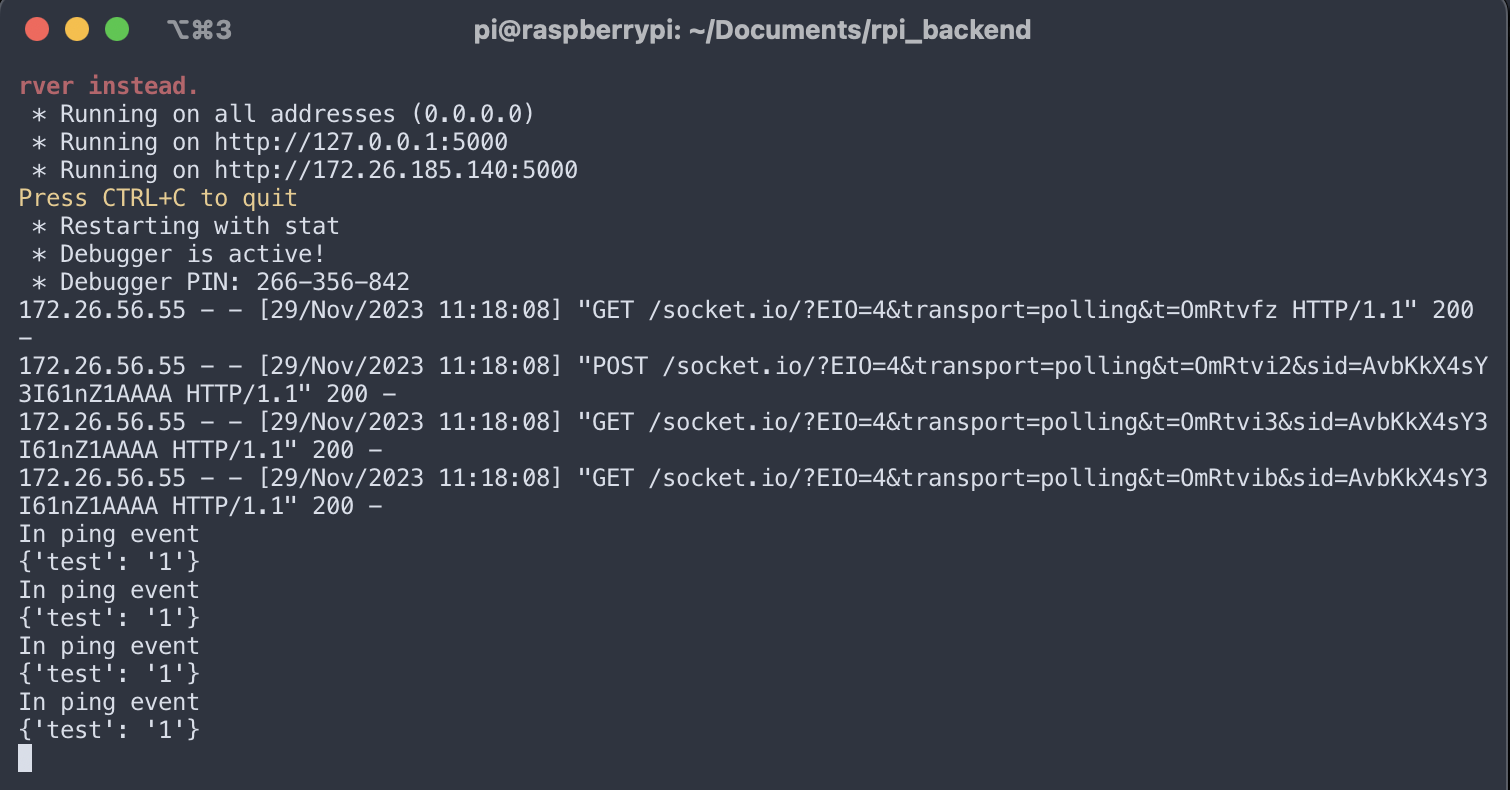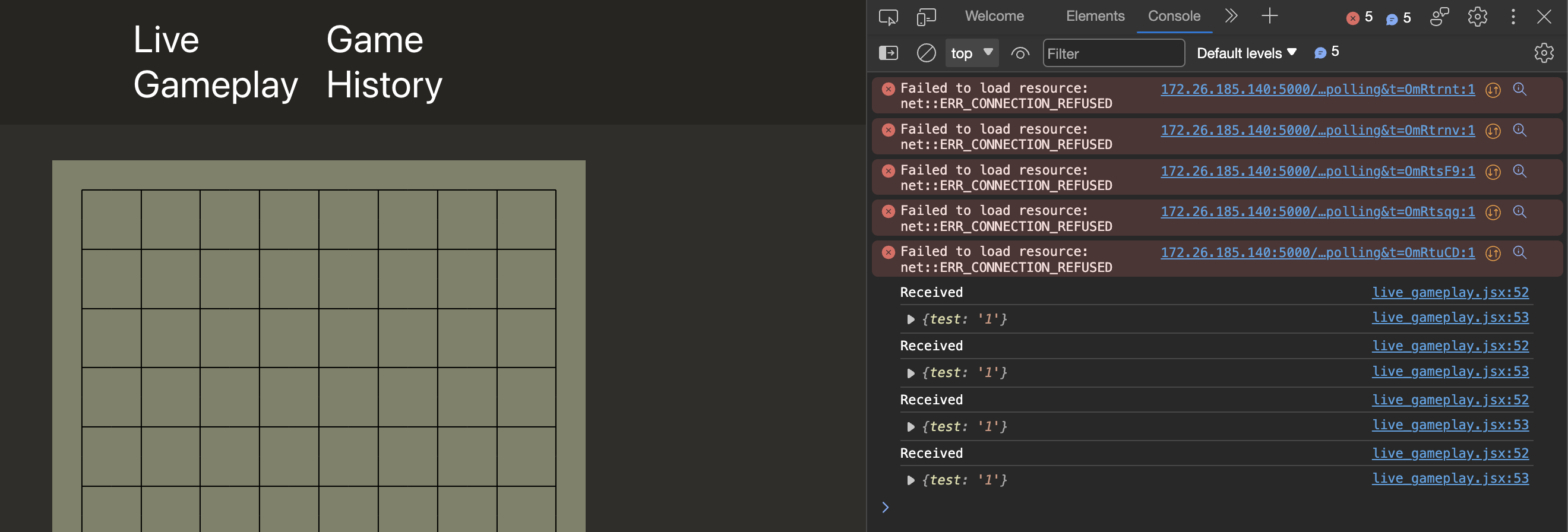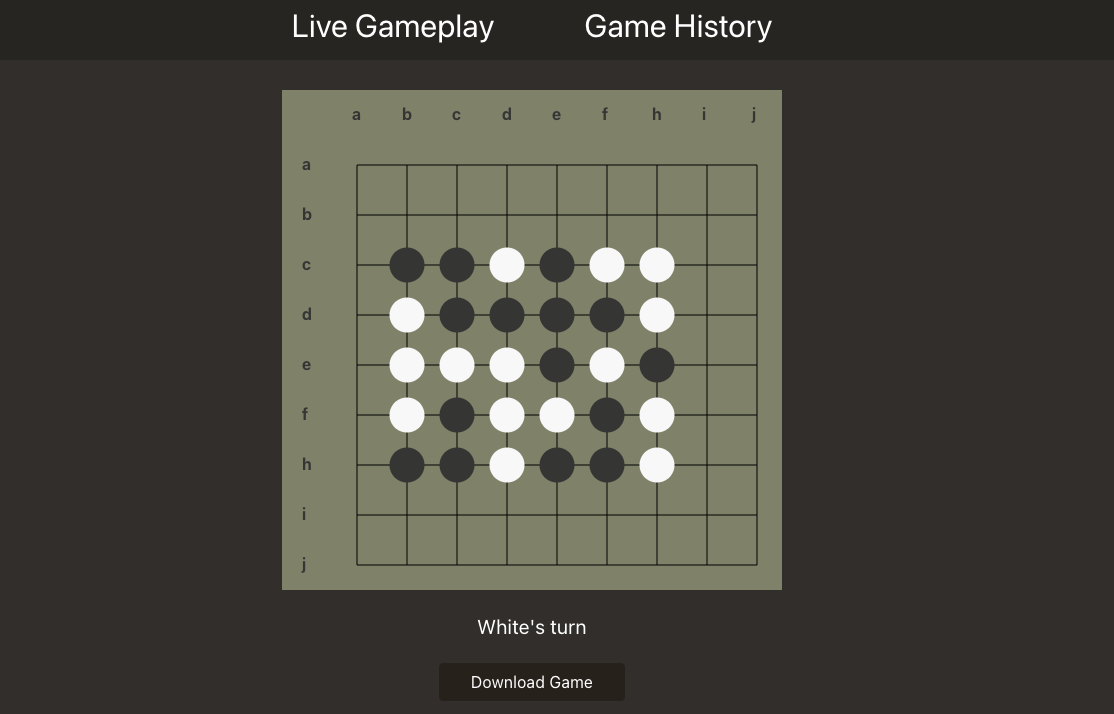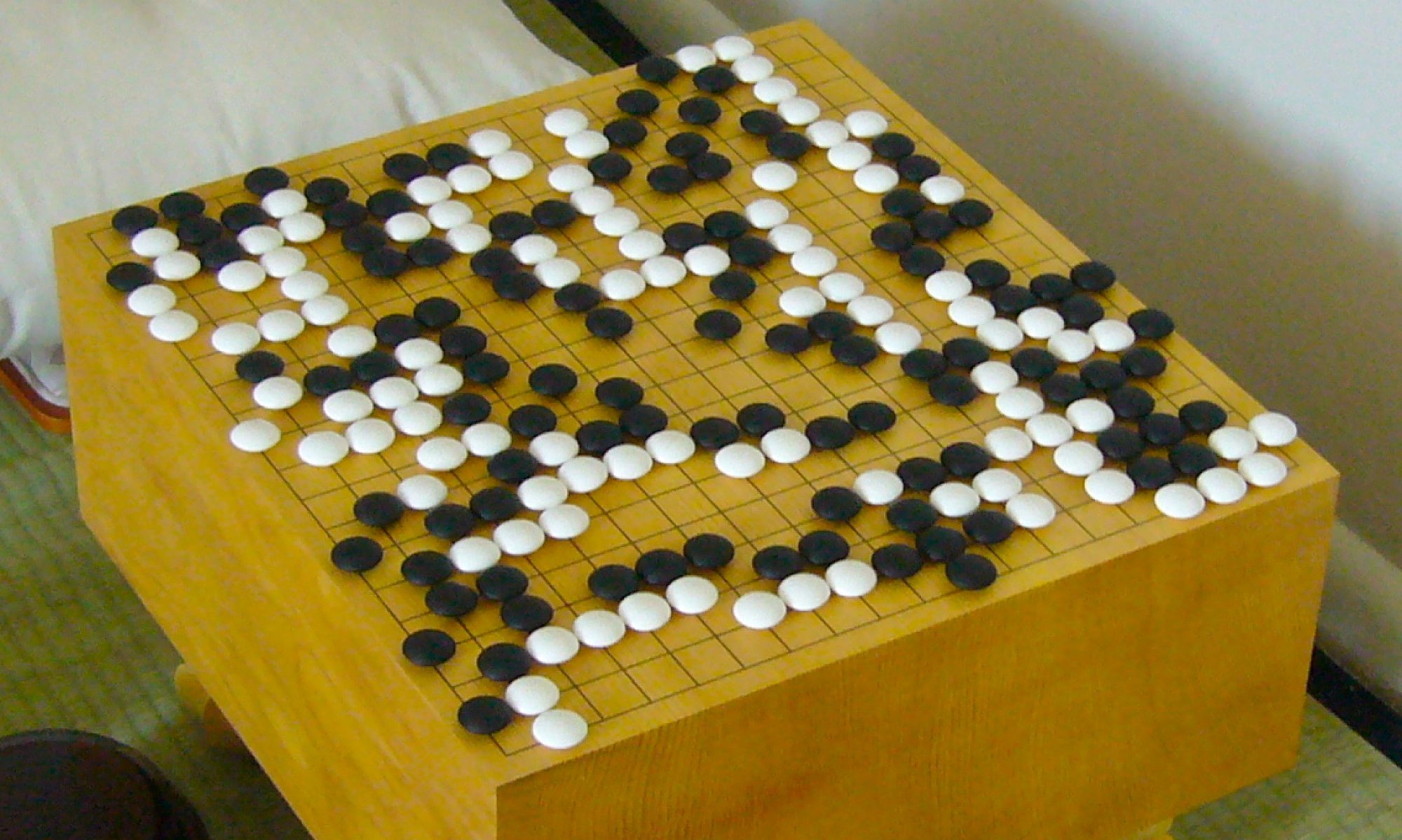This week I was working on setting up a flask server on the Raspberry Pi, so that we can set up a websocket for wireless bidirectional communication between the physical board and the web application instead of wiring the Arduino to a computer. I had to spend some time setting up the Raspberry Pi in headless mode so that I could simply SSH into the machine instead of setting up a monitor and keyboard each time, and once that was done, I started moving the websocket code from the original server code into the Raspberry Pi. The image below shows the flask server being hosted on the Raspberry Pi, and the communication between the web application and the Raspberry Pi.


Since we changed the board to accommodate 9×9 games instead of 19×19 games, I had to change some parameters in my code to fit the new board. While I was working on this change, I also added row and column labels into the board, so that it is easier for players to read the recommended game moves when the row and columns are listed. Below shows the new board/ui.

I’ve also added the engine to the backend server, so the backend server is almost completely finished now as it takes in a game state and returns the top 5 moves with the probability of winning associated with each move. The only thing left for the backend server is to update the final weights once our new engine is completely trained.
The progress on the software is on schedule. The only important item left on the software side is setting up serial communication between the Arduino and the server on the Raspberry Pi, but this is currently bottlenecked by the completion of the physical board.
By next week, I’ll polish up some final visual items on the web application, and finish setting up serial communication between the Arduino and the server on the Raspberry Pi.
